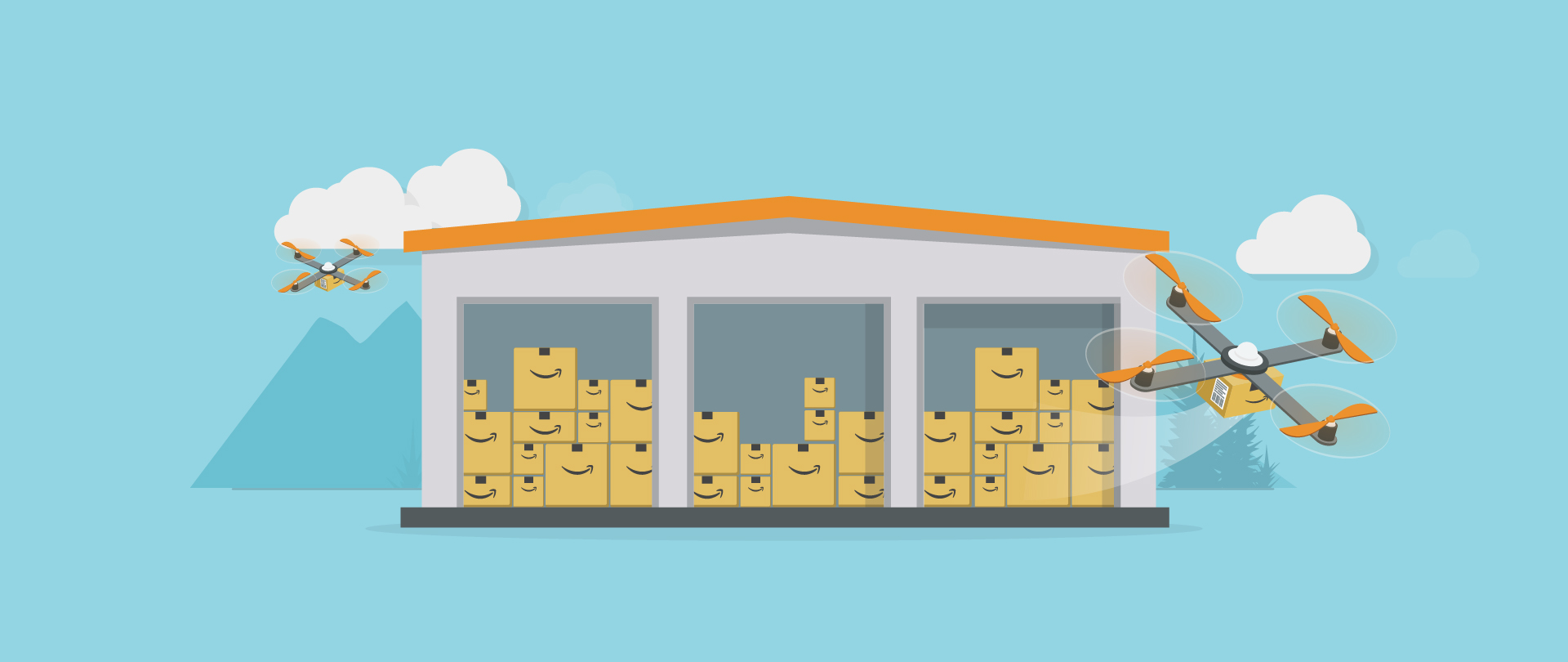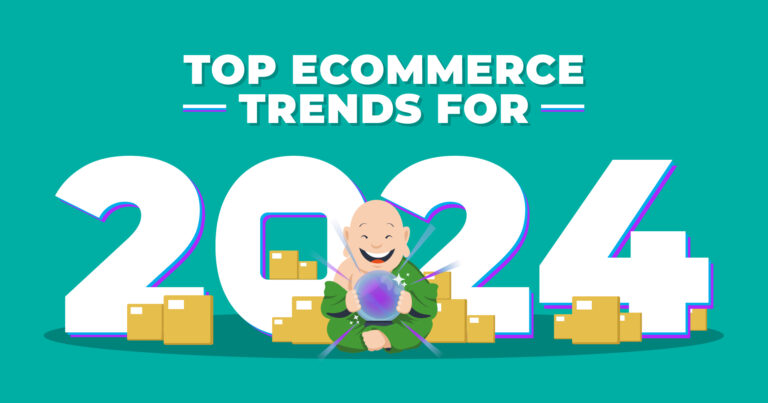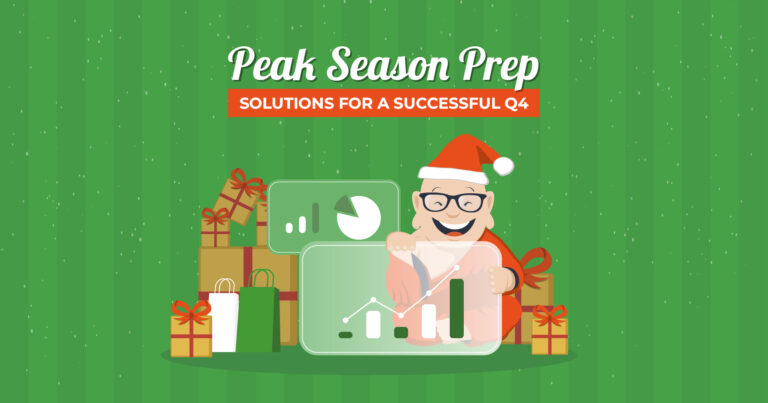What Is Amazon FBA?
You can imagine the benefits of having the world’s largest online retailer list, ship, and manage your product. Fulfillment by Amazon, or FBA, enables any company or person to sell their products through Amazon’s marketplace and let them handle the order fulfillment tasks. As a matter of fact, 50% of Amazon’s products sold in Q1 of 2017 were not owned by Amazon, but third-party sellers. Of these sellers, 71% responded said that FBA resulted in at least a 20% growth in sales.
If you’re an eCommerce entrepreneur, this deal sounds like a no-brainer.
However, despite Amazon’s excellence and the benefits FBA affords, there are still plenty of considerations to make as to whether or not FBA is the right option for your business.
In this article, we’ll explain:
- How FBA works
- How much FBA costs
- Pros and cons of FBA
- Alternative fulfillment options
- Seller Fulfilled Prime
How FBA Works
To explain FBA in the simplest way, you sell your product online and outsource all the unglamorous and laborious tasks involved in the fulfillment process to Amazon. Of course, this is done in return for fees, which we’ll explain later in exhaustive detail.
As a seller, what’s required of you is to prepare your products, so they are ready to sell on Amazon. Following this, you will need to ship these parcels to an Amazon fulfillment center. From this point on, the product is out of your hands and Amazon takes over. Here is what they do for you:
- Amazon unpacks your product and stores it in their fulfillment centers
- Your product becomes searchable and purchasable on Amazon.com
- A customer purchases your product
- Amazon picks and packs your product
- Amazon ships your product to the buyer
- Amazon provides customer service for the buyer after shipment
Costs
Amazon recently changed their fee structure for FBA at the end of February 2017. Currently, to determine how much FBA costs, you must consider two sets of expenditures: fulfillment fees and monthly storage costs, which are ultimately contingent on the size of the item(s) and the time of year.
Fulfillment fees cover picking and packing your orders, shipping and handling, customer service, and product returns. Fulfillment fees are charged per unit, but there are specific stipulations for how the size of your product is classified, which obviously determines its price. There is also a slight difference in price per unit between the January-September and October-December timeframes to account for the spike in Q3 orders.
You can find more details on Amazon’s FBA pricing page.
Also on that page, you can find the specifics for the monthly storage fee. It is calculated by cubic feet and largely determined on whether the time of the year is January-September or October-December.
To get a clearer picture of how much FBA would cost you and thus how much margin remains for you, check out the Fulfillment by Amazon Revenue Calculator.
Pros & Cons of FBA
There are many factors that you must take into account when evaluating whether or not FBA is beneficial to your business, but we’ve compiled a list of pros and cons based on our experience and the customers with whom we have worked.
Pros
As you can imagine, having the world’s largest retailer handle your fulfillment results in some non-trivial advantages.
What exactly are they?
Access to Prime customers
Many of FBA users cite this perk as the most beneficial. By using FBA, your products automatically become Prime eligible for FREE two-day shipping. In addition to the instant credibility that comes with Prime, Amazon Prime customers spend almost 3 times more than the standard Amazon shopper. Last year, a report estimated Amazon has 54 million Amazon Prime subscriptions in the U.S., which is close to half of American households, so you can imagine the potential for exposure.
Prime single-handedly eliminates the primary reason for shopping cart abandonment: shipping and handling costs. Put yourself in the shoes of your customers. If there are two nearly identical products online and one of the two are eligible for Prime, which would you choose?
And to top it off, the seller will be charged the same shipping rate regardless of whether or not the customer chose to ship via Prime or not.
Increased Visibility with Buy Box
Amazon is the largest shopping search engine and many shoppers don’t look any place else besides Amazon. With that said, a business using FBA receive greater prominence than non-FBA businesses in Amazon’s Buy Box feature.
Customer Service and Return Management
Amazon’s customer service is revered for its quality, and by using FBA you have access to their 24/7 service. As retailers also know, the return management process can be difficult to manage so Amazon will take care of this for you as well. Know, however, there is a returns processing fee that varies based on product size and type.
Cons
Why would you think twice about choosing Fulfillment by Amazon, and what are some problems that you could run into with FBA that you wouldn’t with another fulfillment service?
Strict Receiving Guidelines
In order to get your product stocked, listed, and sold on Amazon, you must first have your product arrive at their fulfillment center(s). This is a process called “receiving”. Amazon’s receiving standards are astonishingly strict. They lack flexibility, in that they require your products to be ready for fulfillment upon arrival at their fulfillment centers. There can be no non-standard shipping methods. If you fail to adhere to these rules, you run the risk of being charged for noncompliance. Perhaps even more damaging, they could refuse delivery of your product!
Walmart & Jet.com
FBA is not limited strictly to Amazon sellers. However, if you want to sell on multiple sales channels, FBA may or may not perform all the fulfillment functions necessary. FBA will no longer fulfill Walmart and Jet.com orders, due to a perceived conflict of interest. Many sellers believe in diversifying their sales channels, so they are not reliant on a single revenue stream. With FBA’s recent change, they are looking elsewhere to fulfill orders outside of Amazon.
Branding and Customer Loyalty
If you do decide to be listed on Amazon, your sales will likely increase. However, with every purchase, your customer is establishing loyalty to Amazon instead of to your company. Some buyers may not even know your company after they use your product. If you decide to sell on Amazon.com, you could be losing brand loyalty as opposed to if you sold through your own channel. Also, you may find it challenging to distinguish your product from all the other products Amazon has listed. As the seller, you have only jurisdiction over the product photos and description.
Missed Opportunities for Growth
You may have customers that love your products and brand from selling through Amazon, but since you never capture your buyers’ email addresses in the process, you may miss out on opportunities of promoting deals and new product launches in the future, which could be damaging to your long-term sustainability.
Sales Tax Compliance
Many FBA users have spoken out about this issue as well. According to Amazon, they have more than 70 fulfillment centers across the United States. This is a double-edged sword since third-party retailers are unsure of where their merchandise is stored. This creates issues since different states have different tax laws and the sellers are unsure of where to register for sales tax compliance. This results in potential liability issues for the third-party retailers.
Long-term inventory storage fees
Since Amazon’s fulfillment centers are structured to ship at a high-volume, units that are stagnant for longer than 6 months are subject to a semi-annual long-term storage fee.
You can review the complete explanation of FBA’s long-term storage, along with frequently asked questions here.
The charts below showcase FBAs standard storage fees, as well as, their long-term storage fees. Also, the long-term storage fee is in addition to the monthly inventory storage fee, which means the monthly inventory storage fee will continue to be charged each month.
Liens
A popular way Amazon sellers take their business to the next level is by increasing the amount of inventory and SKUs. Expanding inventory is great for decreasing the cost per unit, but it requires a greater investment that most businesses can afford without getting a loan.
Traditional banks typically do not loan money to Amazon sellers because unlike a brick-and-mortar location, there’s no collateral and they cannot go into an FBA warehouse to collect inventory if the seller were to default on the debt.
Alternatives
If you’re still unsure if FBA is right for you, rest assured, there are other options.
Utilize a Fulfillment Center
The closest alternative to FBA would be to use another third-party fulfillment center. With a different fulfillment service, sellers retain control over their product, know where their product is stored, and are able to outsource their fulfillment needs, thus affording them more time to concentrate on growth.
Prices may vary as well depending on your needs so it is worth a look at other companies like ShipMonk.
Keep Fulfillment In-house
An option for smaller retailers would be to do in-house fulfillment. Obviously, this way you save on the labor fees associated with picking and packing your products as well as storage in Amazon’s warehouse. This is a solid option for companies who are not yet overwhelmed by tackling their shipping and storage needs.
Perhaps you would enjoy using FBA, but you would rather not handle your merchandise at all. It is possible for your supplier to put the barcode on the merchandise that Amazon requires and ship directly to them. If this is the case, then they need to apply for a GS1 barcode.
Seller Fulfilled Prime
Another alternative to FBA is Seller Fulfilled Prime or SFP. SFP allows sellers to list their products as Prime eligible while using a fulfillment service other than Amazon. So, in short, Seller Fulfilled Prime gives you probably the greatest benefit of being FBA without the fees of shipping and handling associated with it.
To be eligible for SFP you first need to meet Amazon Premium Shipping requirements and pass their Seller Fulfilled Prime trial. If you accomplish these two prerequisites, you qualify for SFP. To meet these requirements, your fulfillment service needs to be top-tier. For example, you need to show an on-time shipment rate of 99% on Prime orders during your trial period.
Now that you are armed with the knowledge and understanding of what FBA is, you will be able to conquer your fulfillment needs using whichever method works best for your business.
If you are interested in Seller Fulfilled Prime, FBA prep, or you are looking for a fulfillment center to handle your online order, we’d love to chat!



